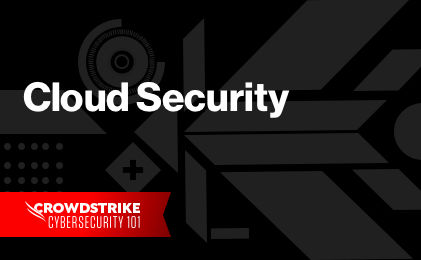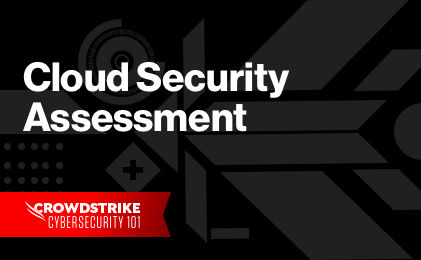Modern enterprises operating in the cloud need to protect sensitive data and maintain business continuity; therefore, they need to protect their cloud environments. However, cloud security isn’t a static, one-and-done task. Compliance regulations evolve, new threats emerge, and cybercriminals adapt — what is secure today may not be secure tomorrow.
The current security status of your cloud environment is crucial, and a cloud security audit can provide a comprehensive assessment.
Cloud security audits can help identify potential threats or noncompliance early, enhancing your organization’s security posture. They comprehensively evaluate your cloud infrastructure, policies, and controls to ensure they meet established security standards and regulatory requirements. These audits offer assurance to key stakeholders, customers, and regulators.
In this post, we’ll explore cloud security audits and compliance requirements, examining their role in safeguarding customer data and helping evaluate and maintain compliance with key laws, regulations, frameworks, and standards.
What is a cloud security audit?
Cloud security audits involve reviewing an organization's infrastructure, policies, and controls to verify compliance with regulatory requirements. The term “cloud security audit” is sometimes confused with “cloud security assessment,” but each serves a distinct purpose. While the purpose of a cloud security audit is to assess compliance and security controls mapped to laws, regulations, frameworks, and standards, the purpose of a cloud security assessment is to evaluate an organization’s cloud infrastructure to identify and address security risks.
Benefits of a cloud security audit
Cloud security audits offer three key benefits to organizations:
- Risk reduction: Cloud security audits validate organizations’ compliance with laws, regulations, frameworks, and standards such as the GDPR, HIPAA, and PCI DSS, helping to prevent potential data breaches and subsequent financial loss and reputational damage. By identifying noncompliance early, remediation can occur more quickly, resulting in reduced risk. In addition, auditing backups also help significantly reduce risk by ensuring data is properly protected and recoverable in case of an incident.
- Enhanced security posture: Cloud security audits check third-party vendor integrations, review access controls, and identify weaknesses in cloud infrastructure,surfacing gaps in your organization's security posture.
- Validated assurance: Audits help demonstrate to regulators, governing bodies, customers, and stakeholders that your organization maintains a compliant and secure cloud environment. Cloud security audits also help your organization improve data confidentiality, integrity, and availability, and they help prevent data loss and build trust.
Key audit components
A cloud security audit focuses on several key components, ensuring that all aspects of your organization’s cloud infrastructure are fortified against potential threats.
Documentation and policy review
An audit should assess your organization’s existing security policies and procedures to ensure they meet regulatory and legal compliance requirements and align with industry frameworks and standards. In addition to helping determine if compliance controls are being met or exceeded, documentation and policy reviews can help identify gaps and areas for improvement to strengthen overall security governance.
Access control and management
The principle of least privilege is a security best practice in which a user’s access is limited to the minimal set of permissions necessary to accomplish their tasks. A cloud security audit reviews identity and access management (IAM) permissions and other access control policies to ensure the principle of least privilege is in effect.
Data protection and encryption
Data protection and encryption audits verify that data — both in transit and at rest — is encrypted using strong cryptographic methods to safeguard against unauthorized access. This measure protects against the unauthorized exposure of sensitive information. As a result of a cloud security audit, organizations should review and update retention and encryption policies for their cloud data storage to ensure compliance with the GDPR and other relevant regulations that mandate data protection and encryption controls.
Network security
A cloud security audit evaluates network security measures — such as firewall configurations and network segmentation rules — to protect against unauthorized access. This helps safeguard sensitive customer data and reduces the blast radius of security breaches.
Incident management
A cloud security audit also reviews an organization’s incident response planning and management, ensuring the plan is comprehensive and effective in handling potential security incidents. An effective incident response plan helps organizations respond quickly and efficiently to security breaches.
Training and awareness
Training programs and security awareness initiatives for employees are crucial, as they prepare staff to recognize and respond to potential threats and reduce human error that could lead to security breaches.
Third-party risk management
Enterprises often integrate their cloud infrastructure with third-party vendors for software as a service (SaaS) applications, such as Salesforce, Slack, and Microsoft 365. A cloud security audit includes verifying the security posture of these third-party integrations to ensure that they are not a weak link in your organization’s security and compliance.
Continuous monitoring
A cloud security audit assesses your organization’s implementation of continuous monitoring, which enables early detection of vulnerabilities and swift action to prevent potential breaches.

The Schunk Group
Read this customer story and learn how The Schunk Group, an international high-tech company, protects its IT Infrastructure with cloud-native CrowdStrike Security.
Read Customer StoryCompliance reports
Cloud security audits also look to see if you have comprehensive reporting in place to serve as evidence in your compliance validation efforts. Effective compliance reporting supports ongoing regulatory adherence and enhances transparency and accountability within the organization. These are the main types of compliance reports assessed during a cloud security audit:
Audit trails
Maintaining detailed audit trails involves recording every access and change made within the cloud environment. These logs provide a comprehensive history of user activities, system modifications, and data access events, which are crucial for investigating incidents. They also help ensure accountability and meet regulatory requirements.
For example, at financial institutions, detailed logs of all transactions and administrative changes help quickly identify and investigate any unauthorized access or anomalies, thereby maintaining trust and regulatory compliance.
Regular audits
Regular internal and external audits are essential for verifying compliance with security standards and regulatory requirements. These audits systematically evaluate the cloud infrastructure and security practices, helping to identify and address vulnerabilities and ensuring that the organization remains compliant over time.
For example, a healthcare provider may undergo annual HIPAA audits to ensure that patient data is protected as required by law, identifying and rectifying compliance gaps.
Reporting to stakeholders
Providing compliance reports to stakeholders, customers, and regulators ensures transparency and builds trust. These reports detail the organization's adherence to security policies and regulatory frameworks, demonstrating a commitment to maintaining a secure and compliant cloud environment and reassuring all parties involved about the security measures.
CrowdStrike Professional Services for cloud security services
Cloud security is critical for enterprises, and regular cloud security audits ensure that your organization meets regulatory compliance requirements and is prepared to respond effectively to security incidents. CrowdStrike Professional Services can assist organizations with cloud security audits by leveraging its expertise in threat intelligence, incident response, and proactive security measures. CrowdStrike Professional Services helps identify vulnerabilities, assess compliance with industry standards, and implement best practices to secure cloud environments. CrowdStrike’s comprehensive approach includes detailed assessments, tailored recommendations, and continuous monitoring to ensure robust protection against evolving cyber threats, ultimately helping organizations maintain a strong security posture and regulatory compliance in their cloud environments.
Visit CrowdStrike Professional Services for more information and request information to get started.





